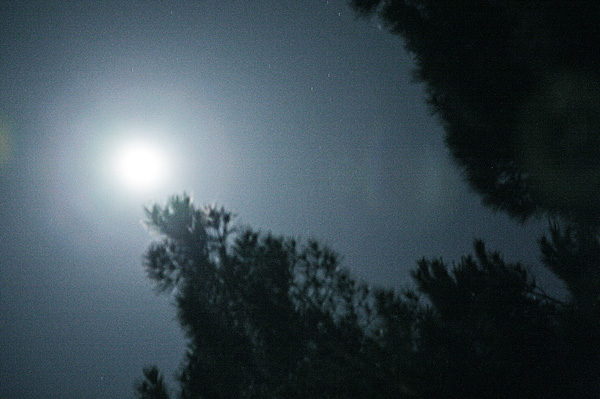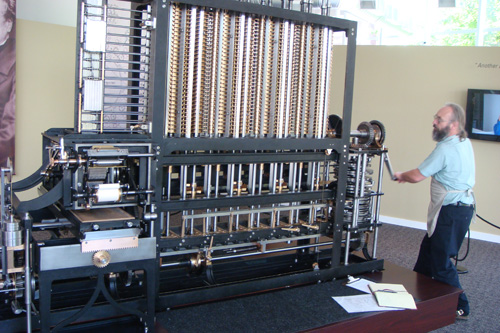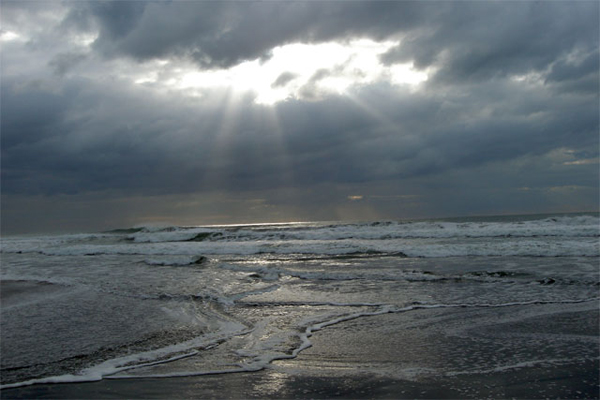
I’ve been writing some short stories, recently. The last two have to do with the Steinhardt-Turok Cyclic Universe model that I’ve been blogging about lately.

I wrote a 1,000 word short-short “Message Found in a Gravity Wave” which I sold to Nature Physics, it hinges on the idea that the Big Splat comes tomorrow, and a guy wants to preserve a token of himself by leaving a message in the form of a gravity wave—the kicker is that he creates the gravity wave by writing his missive (which is the text of the story) in a somewhat surprising form. I figure he lives in Skylight, Kentucky on a former horse farm that’s now a chicken farm — right down the road from where I grew up.

And I’m working on a (slightly) more serious story with Bruce Sterling, still underway, working title “Colliding Branes,” which is also about events during a near future end time that results when the brane collision happens very much sooner than expected.
I’m thinking of yet another take on the Cyclic Universe, although this time I’ll stay well away from the Big Splat aspect, as I don’t want to use the same thing a third time.

An angle I haven’t touched yet is that our space might have infinitely many planets right now. I want a story that somehow assuages my frustration over our seeming inability ever to see the infinitely many other planets that are right there right now. The problem is that we had this space-filling Big Flash 14 billion years ago, and we can’t “see” through that. Also everything was wiped out by the flash.

But what if there are somehow surviving signals from the more distant zones, signals from previous cycles. SF element: the signals come through the subdimensions.
I see the working title as “To See Infinity.”

I think about a Golden Age story, James Blish’s “Beep” of 1954, (later expanded into The Quincunx of Time, 1973) in which the spaceships have some kind of faster-than-light radio (called a Dirac transmitter), and messages end with this annoying beep, and they’ve found a way to edit out the beep most of the time. But then some guy fools around with the beep and realizes its a compressed version of all the messages from all future times, the scientific justification being that, in special relativity, faster-than-light messaging is logically equivalent to sending messages backwards in time. [Gregory Benford mentions the story in his article “Time and Timescape” in Science Fiction Studies #60, see abstract.]

In “To See Infinity” maybe the characters are messing with subaether radio. And the compressed message could be incoming radio telemetry from the previous cycle of the universe, call it cycle minus one, and these signals come from a spherical shell of space with inner radius one trillion light years and outer radius of a two trillion light years. And there’s a subtler overtone type beep from the two to three shell of cycle minus two, and yet another still more rarefied signal for the three to four shell of cycle minus three, ad infinitum. (Actually the shells are in some sense bigger than a trillion miles thick, now, due to the stretching of space, but they were that thick when the messages got into the subaether.)

How to narrate it? I was watching the Amadeus movie last night, and thinking what a brilliant device it is to have Mozart’s rival Salieri narrate his life. So we have this somewhat ordinary guy (who we relate to) telling us about the genius. And we don’t know enough about music to appreciate why Mozart is so great, but Salieri explains it to us, not as if he’s explaining, but as if he’s drooling over the upstarts work. By the same token, people cant appreciate math, but if we had a narrator talking about a young upstart, he could in passing give us a flavor of the upstart’s math.

Math? Well, maybe its a futuristic combination of math and music. And I’m supposing that the upstart is in some way tuning in on the messages to do his work. And maybe the big reveal is that he’s using infinity.
I have a personal fondness for the Amadeus movie as when I went to a Flatland Centennial conference on the fourth dimension at Brown University in 1981, I met Tom Banchoff and Kee Dewdney there, two other great 4D experts. I was in my old wild-man conference mode, ecstatic, gabbing, partying with Kee. Another attendee remarked to me——“Did you see Amadeus? The Mozart character reminds me of you.”

So the Salieri-type narrator could be this somewhat plodding guy describing the disappearance of a wilder, younger Mozart-type guy. And the narrator is disturbed, as he blames himself (not without some justification) for the young genius’s death.
The emanations from the higher cycles might be perceived with your subtle body. Perhaps generation to generation, each old brane migrates to a higher brane.

By the way, at first I wanted to use the title, “The Starry Crow,” for my story, as the other day I was looking at a crow, admiring how black and unreflective he is, and it struck me that it would be cool if the black was full of stars. But now I’m thinking, Arthur Clarke kind of used up the conceit, “it’s full of stars,” but maybe I could use it anyway. I really like crows.

I was going to start work on the story this week, but now my Tor editor, Dave Hartwell, has come back with some suggestions on my Hylozoic novel manuscript, so I probably should start working on those. Also I’m still working on my Montgomery Hill painting.

This is an early stage, it’ll look better tomorrow…














































